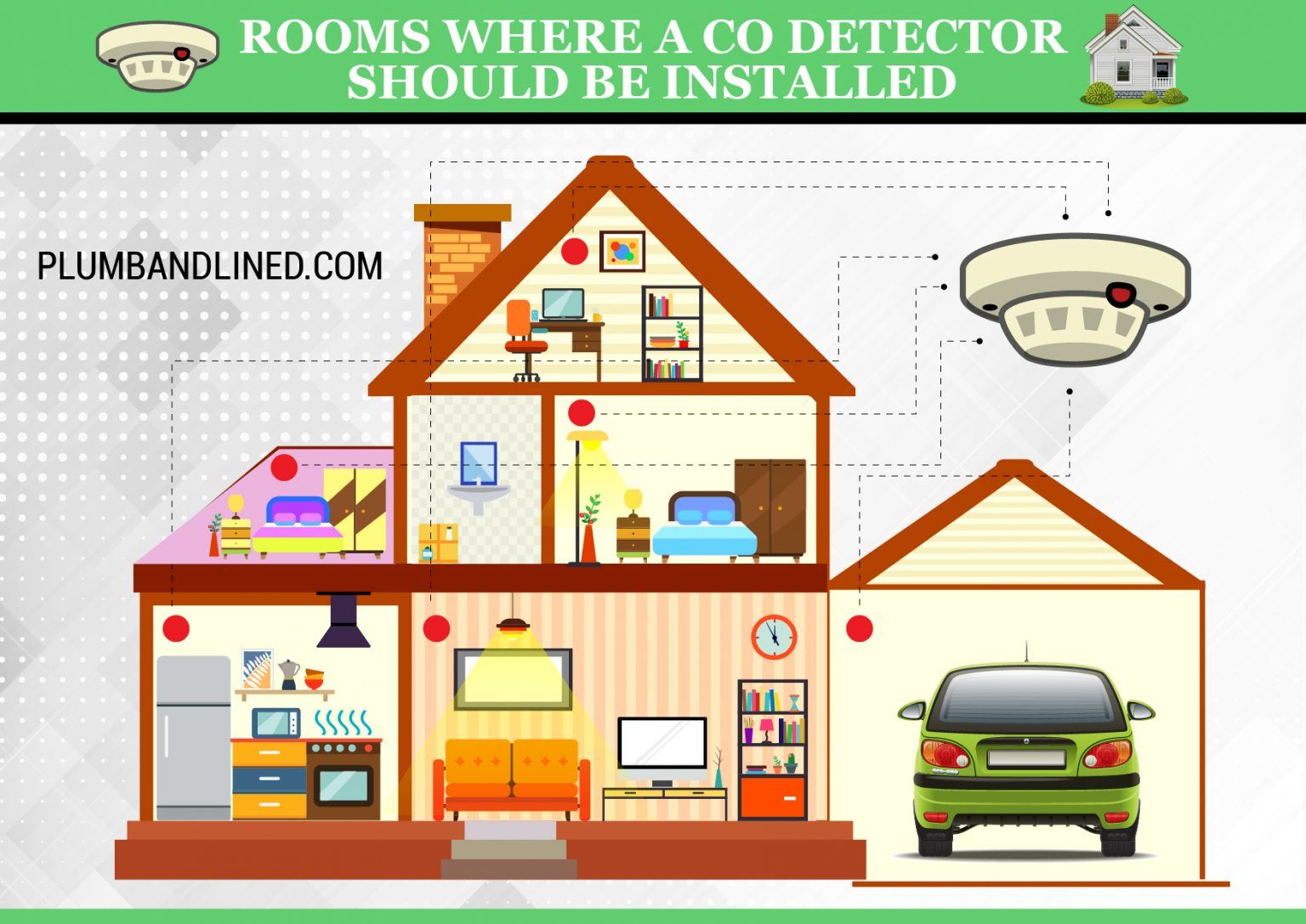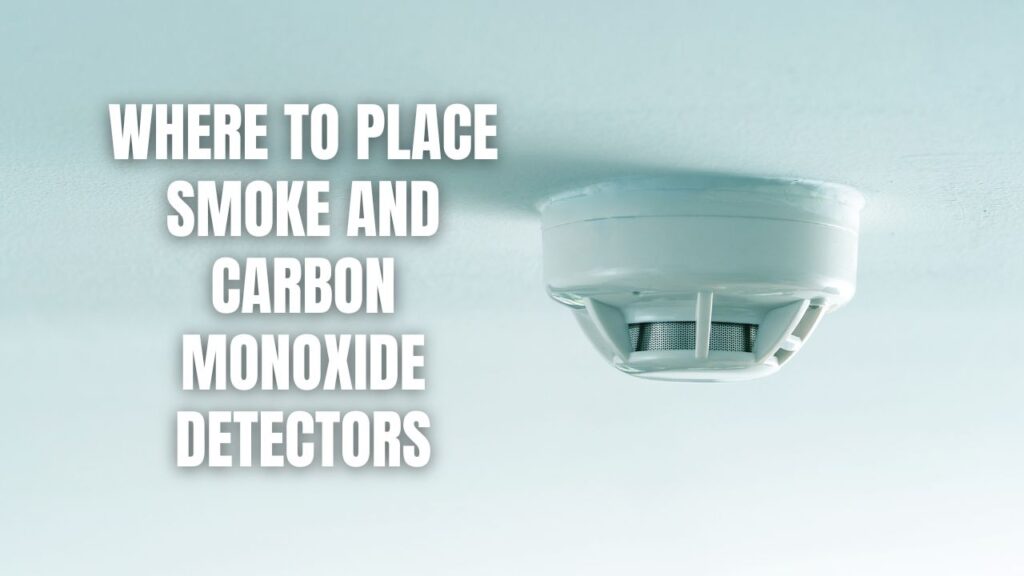Carbon Monoxide Detectors Where To Place

Carbon monoxide (CO) is a colorless, odorless, and tasteless gas produced by the incomplete burning of carbon-based fuels. Because it is undetectable by human senses, it's often called the "silent killer." Installing and maintaining carbon monoxide detectors is a crucial safety measure in any home or building with fuel-burning appliances. But simply having detectors isn't enough; proper placement is paramount to ensure effective early warning. This article provides a detailed guide on where to place carbon monoxide detectors for optimal protection, catering to homeowners, HVAC technicians, and facility managers alike.
Understanding Carbon Monoxide Sources
Before discussing placement, it's vital to understand potential sources of CO within a building. These sources are common and can become dangerous if not properly maintained or ventilated:
- Furnaces: Gas, oil, and propane furnaces are primary CO sources if they malfunction or are not properly ventilated. A cracked heat exchanger, a common problem, can allow CO to leak into the living space.
- Water Heaters: Similar to furnaces, gas and propane water heaters release CO during combustion.
- Fireplaces: Wood-burning and gas fireplaces can produce CO if the chimney is blocked or the damper is closed prematurely.
- Appliances: Gas stoves, ovens, clothes dryers, and portable heaters all pose a CO risk.
- Generators: Portable generators should never be operated indoors or in enclosed spaces like garages. Even with open doors, CO can build up rapidly to lethal levels.
- Vehicles: Cars and trucks running in attached garages can quickly fill the space (and potentially the house) with CO.
Optimal Placement Strategies for Homes
For residential buildings, the National Fire Protection Association (NFPA) recommends installing CO alarms:
- On every level of the home: This includes the basement. CO can spread throughout a house, so multiple detectors provide comprehensive coverage.
- Outside each sleeping area: This is crucial because people are most vulnerable while sleeping. Place the detector in the hallway near the bedrooms.
- Within 10 feet of each bedroom door: The closer the detector is to the sleeping area, the faster it can alert occupants.
Specific Room Considerations
- Bedrooms: While detectors are recommended outside bedrooms, consider installing one inside if occupants sleep with the door closed or if the bedroom houses a fuel-burning appliance (like a space heater).
- Basements: Place a detector near the bottom of the stairs leading to the living area. Basements often house furnaces and water heaters, making them a potential CO hotspot.
- Garages: If the garage is attached to the house, install a CO detector in the house near the connecting door. Never install a detector directly in the garage; extreme temperatures and humidity can damage the sensor.
- Kitchens: While not always necessary, consider installing a detector in the kitchen, especially if you use a gas stove or oven frequently. However, position it at least 10 feet away from cooking appliances to prevent false alarms triggered by normal cooking fumes.
Height and Position
CO is slightly lighter than air and can be found accumulating near the ceiling. Most manufacturers recommend installing CO detectors:
- High on the wall: Near the ceiling, but at least 6 inches below it.
- On the ceiling: Especially effective in single-story homes or rooms with high ceilings.
Avoid placing detectors in:
- Direct sunlight: Excessive heat can damage the sensor.
- Humid areas: Bathrooms and laundry rooms can cause false alarms or sensor damage.
- Near windows or doors: Drafts can dilute CO and delay detection.
- Behind curtains or furniture: Obstructions can block the sensor.
Placement Guidelines for Apartments and Multi-Family Dwellings
In apartment buildings and other multi-family dwellings, the same principles apply, but with added complexities. Property managers should ensure compliance with local codes and regulations, which often mandate CO detector placement. Consider the following:
- Individual Units: Each apartment unit must have CO detectors following the residential guidelines outlined above.
- Common Areas: Install detectors in common areas like hallways, laundry rooms, and mechanical rooms containing fuel-burning equipment.
- Shared HVAC Systems: If units share a central heating or cooling system, ensure that detectors are placed in areas where CO could potentially enter multiple units. This might include near air vents or ductwork.
HVAC Technician Best Practices for CO Detector Installation
HVAC technicians play a crucial role in CO safety. When installing or servicing HVAC equipment, technicians should:
- Inspect for CO leaks: Use a CO analyzer to check for leaks in furnaces, water heaters, and other fuel-burning appliances.
- Educate homeowners: Explain the importance of CO detectors and proper placement. Provide written materials and answer any questions.
- Recommend detector upgrades: Suggest replacing outdated or malfunctioning detectors with newer models that have features like digital displays and voice alarms.
- Verify detector function: After installing a new appliance or servicing an existing one, test the CO detectors to ensure they are working correctly.
Pro Tip for HVAC Techs: Carry a supply of CO detectors on your truck. Offer to install or replace detectors during routine maintenance calls. This provides a valuable service and increases customer safety.
Carbon Monoxide Detector Technology and Features
CO detectors use different technologies to sense the presence of CO. The two main types are:
- Biomimetic Sensor: This type uses a gel that changes color when it absorbs CO, triggering the alarm. They are generally less prone to false alarms.
- Electrochemical Sensor: This type uses an electrochemical cell to measure the CO concentration. They are generally more sensitive and respond faster to low levels of CO.
Consider the following features when choosing CO detectors:
- Digital Display: Shows the CO concentration in parts per million (ppm), providing valuable information about the severity of the leak.
- Voice Alarm: Announces "Carbon Monoxide" in addition to the standard beep, which can be helpful for people with hearing impairments.
- Battery Backup: Ensures the detector will function during a power outage.
- End-of-Life Warning: Alerts you when the detector needs to be replaced (typically after 5-10 years).
- Interconnection: Allows detectors to communicate with each other, so if one detects CO, all the detectors in the house will sound the alarm.
- Smart Home Integration: Some detectors can connect to your smart home system, allowing you to receive alerts on your smartphone and monitor CO levels remotely.
Maintenance and Testing
Regular maintenance is essential to ensure CO detectors function properly:
- Test Monthly: Press the test button to verify that the alarm sounds.
- Replace Batteries: Replace the batteries at least once a year, or more often if the detector indicates low battery. Many detectors have a 10-year sealed battery, eliminating the need for annual battery replacements.
- Clean Regularly: Dust and debris can accumulate on the sensor and affect its performance. Clean the detector with a soft brush or vacuum cleaner attachment.
- Replace Every 5-10 Years: CO detectors have a limited lifespan. Replace them according to the manufacturer's instructions, even if they appear to be working.
Cost Considerations
The cost of CO detectors varies depending on the features and technology. Basic detectors can be purchased for as little as $15-$20, while more advanced models with digital displays, voice alarms, and smart home integration can cost $50-$100 or more. Consider these factors when budgeting for CO detectors:
- Number of Detectors Needed: Factor in the number of levels in your home and the number of sleeping areas.
- Features: Decide which features are most important to you and choose detectors accordingly.
- Long-Term Cost: Consider the cost of replacement batteries (if applicable) and the replacement cost of the detectors themselves.
While the initial cost of CO detectors may seem like an expense, it is a small price to pay for the safety and well-being of your family or building occupants. Investing in properly placed and well-maintained CO detectors is a crucial step in preventing carbon monoxide poisoning.










